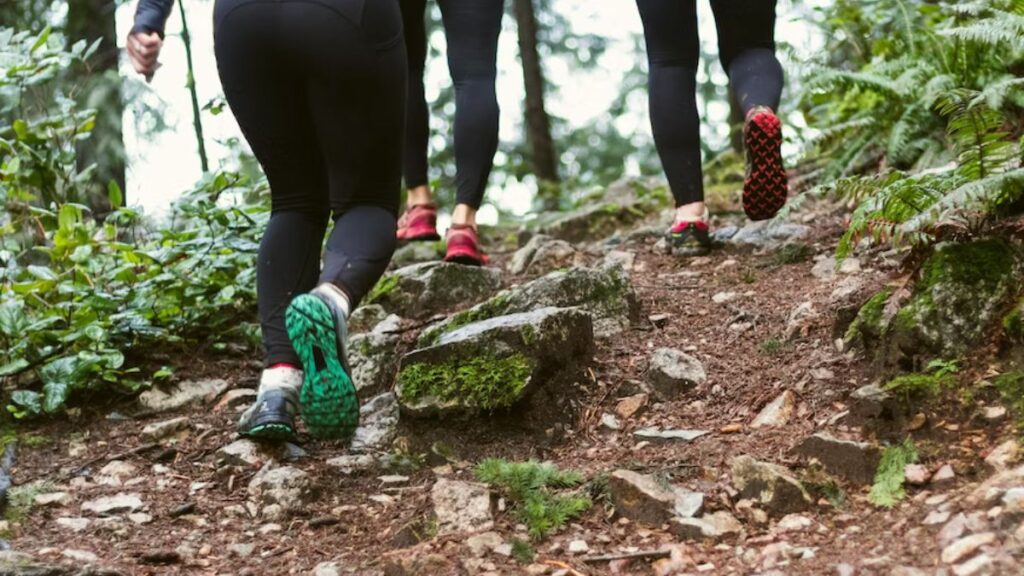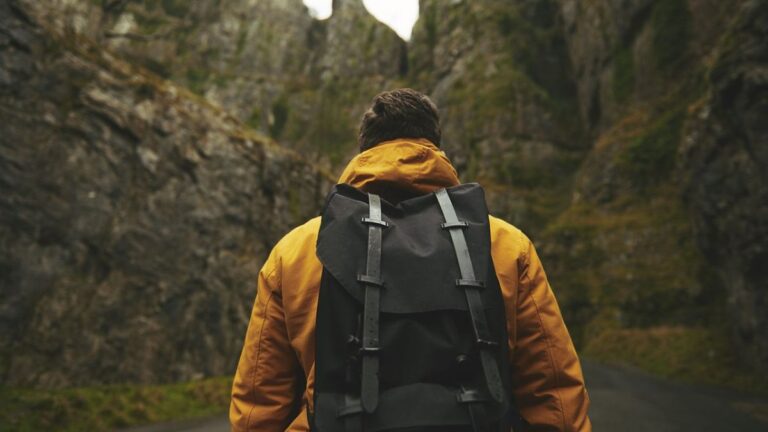One of the most enchanting aspects of trail running is the profound connection with nature it facilitates. As you weave through serene landscapes and conquer challenging ascents, you’re rewarded with breathtaking vistas and a sense of accomplishment that only the wilderness can provide.
Walking and trail running are exciting outdoor activities that allow you to connect with nature, explore breathtaking landscapes, and challenge yourself physically. Whether you’re a hiking enthusiast or you enjoy trail running, the main thing to consider is your shoes.
In this article, we will explore the differences between hiking shoes and trail runners to help you make the right decision based on your needs and preferences.
Hiking Shoes vs Trail Runners
The differences between hiking shoes and trail runners are becoming more blur these days. Basically hiking shoes are preferred when you are going on a tough terrain where you expect rocks, water, sand etc which usually destroys shoes. Trail runners are for those who likes running and needs slight more grip with lightweight which don’t slows the speed of the runner when lifting leg.
| Hiking Shoes | Trail Runners |
| Sometime Heavy | Mostly Light in weight |
| Durable build | Flexible in nature |
| Waterproof are preferred | Preferred built with breathable material |
| High in Grip | Grip is comparatively low |
| Can bear tough land terrains | Usually weak sole can’t withstand tough lands |
Hiking shoes: Tough and Durable
Hiking boots are specially the best hiking gear designed to provide stability, support and protection for your feet during long treks over uneven terrain. They usually have durable builds with durable materials such as leather or synthetics, reinforced toe pads, hard backs, and more.
Hiking boots typically have a supportive midsole and cushioning, which helps reduce stress on your feet and ankles on rocky or steep mountain trails as they are taken through.
Choose hiking shoes if:
- You are planning to go on a long hard hike on rocky or uneven ground.
- Ankle support is important for you, otherwise you have a history of ankle injuries.
- Sustainability and longevity are important factors in your decision-making process.
- You may prioritize protection from the elements and need a more weatherproof option.
Trail runners: Light & Fast Movements
Trail runners, as the name suggests, are designed primarily for trails and off-road racing. They are preferred for their lightweight and sleek design that allows them to move more naturally.
Trail runners are generally stronger than hiking shoes, making them faster and more responsive on the trails. They typically feature breathable mesh uppers and responsive cushioning in the midsole to provide comfort during more intense activities.
Choose Trail Runners if:
- You are a trail runner looking for flat, lightweight shoes to run faster.
- Your focus is on running on steep trails or on fast tracks.
- Relaxation and comfort are high on your list of priorities.
- You value versatility and want shoes that can be used for running and hiking.
What you should buy? Hiking shoes vs trail runners

Fitness and Comfort:
- Hiking shoes and trail runners should fit comfortably with enough room for your toes to wiggle, but not too loose to cause friction.
- The hiking shoes have a slightly larger structure in order to accommodate the extra cushioning and ankle support, which will take some time to break through.
- Trail runners generally have a nice, compliant fit, giving them a sock-like feel that enhances agility and responsiveness.
Distance and duration:
- The high level of support on hiking shoes for long hikes or multi-day hikes with weights makes them a desirable choice to prevent fatigue and injury.
- For short-to-intermediate distance runs or day hikes, the lightweight design and flexibility of trail runners provide the freedom of movement necessary for strenuous activities.
Weight carried and impact:
- The rigidity of the hiking shoe and the firm sole distribute the weight evenly and provide excellent shock traction on steep surfaces or when carrying heavy loads.
- The soft soles and cushioning of trail runners’ feet are optimized to minimize impact while running, allowing for a more natural footing and quicker change of direction.
Water Resistance:
- Waterproof hiking shoes, in particular, offer excellent waterproofing, keeping feet soft in wet or rainy conditions.
- Trail runners with breathable mesh wet easily in humid climates, but also dry easily due to oxygenation
Temperature Considerations:
- The hardened hiking boots provide excellent insulation, making them suitable for cooler temperatures and winter treks.
- The lightweight, breathable design of runners makes them more comfortable to run in warm weather or summer months.
Leg support and kneeling:
If you have specific foot support needs or issues such as excessive pronation or underpronation, consider choosing a pair of hiking shoes or trail runners that match your needs. Some trail runners offer an extra layer of stability.
Solid Ground:
- Hiking shoes are ideal for rough industrial terrain, including rocky, mountainous, or uneven surfaces, where ankle stability and protection are needed.
- Trail runners are best suited for less technical groomed trails, where flexibility and agility are required to navigate twists and turns.
Conclusion: Hiking shoes vs trail runners
Ultimately, choosing hiking shoes and trail runners depends on your personal needs and preferences. If you are a dedicated hiker looking for increased support and durability, choose hiking boots.
On the other hand, if you are a runner who enjoys speed and agility, trail runners may be a better fit for you. Regardless of which option you choose, investing in high-quality shoes designed for your specific activity will enhance your outdoor experiences and provide maximum comfort and performance on the trails.
Good luck hiking or trail running! Whatever 😄



Leave a Comment